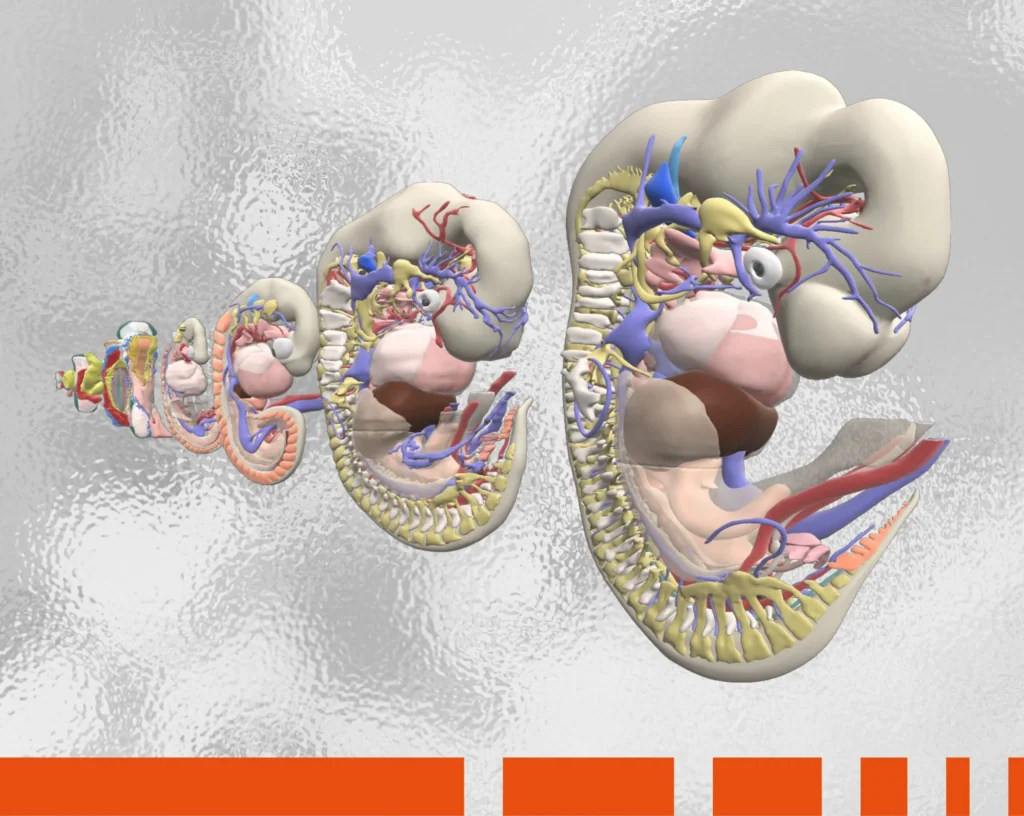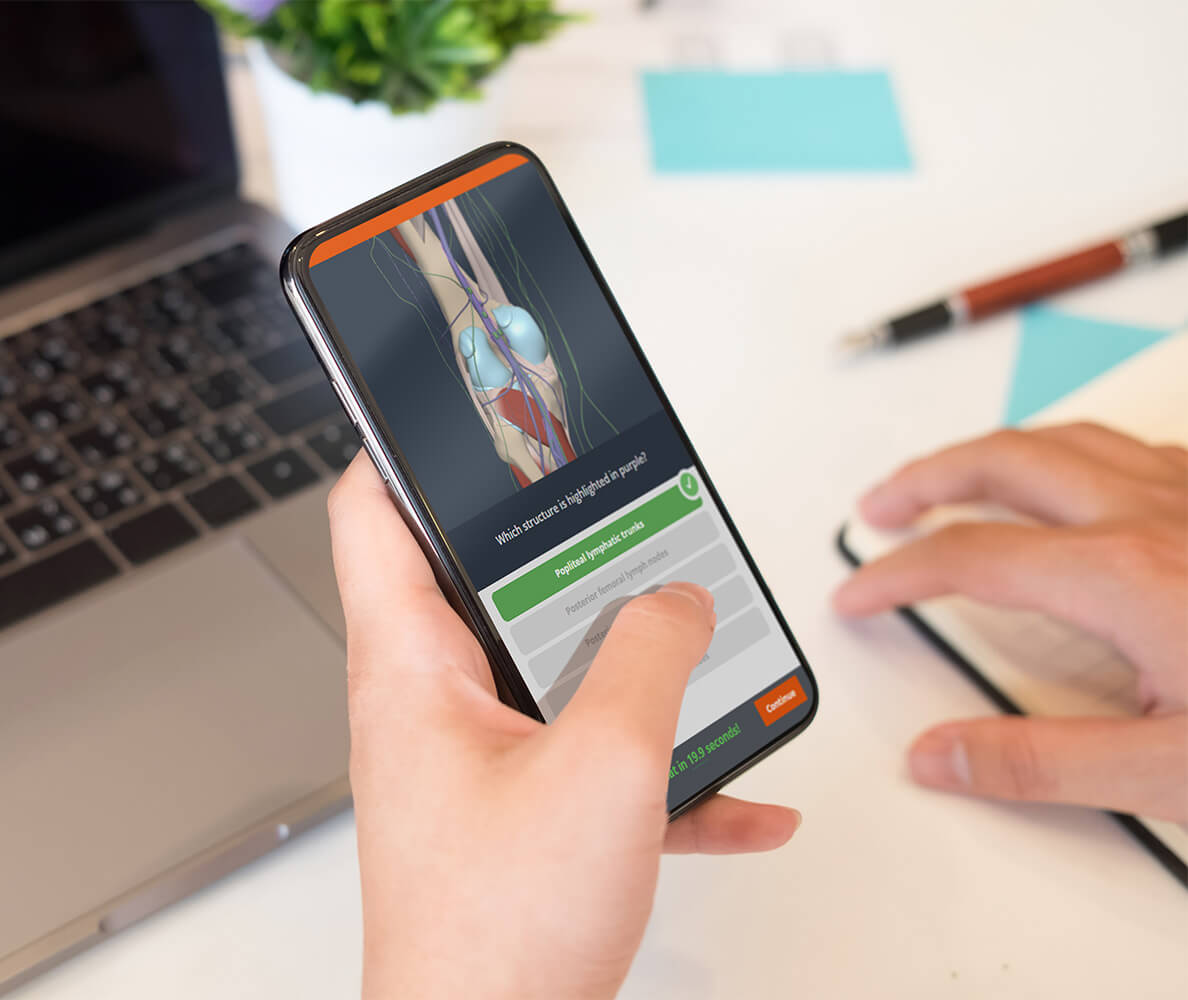And then there is the impact of the COVID-19 pandemic. This has prompted urgent rethinking of in-person anatomy appraisals leading to online alternatives that are often unfamiliar territory for instructors and learners alike.
Right now, anatomy educators need flexible assessment options that:
- Suit face-to-face and remote settings and everything in between
- Meet learning objectives and adapt to different requirements
- Integrate with virtual learning environments (VLE) and learning management systems (LMS)
- Measure students’ participation, progress, and performance
- Deliver better educational outcomes
That is why we have created Primal Assessment, a suite of tools specifically designed for medical and health sciences curricula and created from the highest quality model of human anatomy. All that’s left for you to decide is which tools and formats best fit your needs.
Why Choose Primal Assessment?
Flexible and adaptable, Primal Assessment lets you pick and choose from ready-made options or combine tools to create and upgrade your own assessments. This gives you easy ways to:
- Engage students with appraisals based on detailed, accurate anatomy content
- Implement formal and informal assessments in remote and in-person environments
- Integrate assessments with your curriculum and into your LMS or VLE
- Encourage student self-assessment in low-pressure, guided learning environments
- Track and monitor students’ progress with oversight and reporting tools
As always, we’ve listened to your concerns and challenges. In response, we’ve shaped these tools to meet your changing needs across self-assessment, monitored assessment, live assessment, and spotter tests.
Self-Assessment
In flipped classroom workflows, students are asked to take responsibility for elements of their own learning. This style of education is only likely to increase as the COVID-19 pandemic shifts more of the anatomy curriculum online.
To provide students with low-pressure self-assessment opportunities in flipped classroom and online settings, Primal has a guided learning solution, Anatomy and Physiology. This takes students on a logical journey – organized by body system – through a host of different topics while challenging them to test and further their knowledge with four different types of assessment. These include quizzes, click-a-structure, coloring book and print-and-label activities.
This helps students to:
- Prepare for in-person or virtual sessions with instructors
- Identify and fill any gaps in their knowledge
- Correct any misunderstandings
- Gain confidence in their knowledge
- Remain focused on and engaged with their learning
Monitored Assessment
It’s one thing creating and setting assessments, but quite another to know whether tasks have been completed and what has been achieved. Step forward Primal’s PALMs (Perceptual and Adaptive Learning Modules), which for students are like playing whack-a-mole with flash cards – the best fun they’ll have while learning anatomy!
Based on patented technologies that have been shown to have powerful, long-lasting effects on learning in math and science, PALMs offer educators easy-to-use oversight and reporting tools. You can:
- Create classes to assign learning tasks covering groups of anatomical structures in different body regions
- Gain an overview of your class and response times, completion dates, time spent learning, and scores achieved
- Drill down for a more complete, detailed picture of each student’s performance
Live Assessment
Maintaining student engagement and confirming understanding are priorities for educators during in-person and online sessions across lectures, tutorials, seminars, and practical labs. Live assessment is a great way of achieving this and Primal has an array of tools to help. These include a wealth of interactive views, CT and MRI imaging, and slides in our 3D Atlas and 3D Real-time titles – and not forgetting the biomechanics animations in 3D Functional Anatomy.
What’s great is that you choose how to customize all this content. To get started, we suggest you rotate or flip the model and add or remove layers of anatomy. You can also experiment with highlighting structures and hiding the structure labels. And, of course, you can edit this content further using the likes of Paint and Adobe Photoshop.
All this gives you easy ways to create exciting and pinpoint accurate formal and informal assessments for live environments in a variety of formats covering:
- Quizzes
- Polls
- Spotter tests
- Short answer questions
- Oral formats
- Continuous assessment
Spotter Assessment
Tasking students with identifying particular structures on a cadaver or model is a key part of both informal and formal appraisal in many anatomy curricula. At the best of times, conducting spotter tests in situ is onerous. COVID-19 restrictions around accessing physical spaces and resources only makes this more so.
We can help you test students’ practical anatomy knowledge both online and in person:
- Our new What Is, Where Is quizzing module is your essential aid to preparing students for both physical lab and formal assessment. This is available to all 3D Atlas and/or 3D Real-time subscribers.
- Create your own spotter-style exams as an alternative or supplement to formal appraisal using the ready-made interactive pro-section slides and dissection scenes in our 3D Real-time
- Primal’s PALMs are ready-made spotter-style questions that adapt according to the accuracy and speed of response of the learner.
Key Takeaways
Primal has a portfolio of flexible and adaptable digital assessment options. These are built on our trusted 3D anatomy model and specifically designed to help you achieve your educational objectives. Choose from ready-to-go options and those that you can customize to find the best fit for your needs across:
- In-person teaching environments
- Remote teaching environments
- Hybrids of and transitions between the two
Right now, we’re also excited about some new assessment options we’re working on and we’d love your feedback. So, if you have any suggestions about what you would like to see, let us know.
Want to find out more? Click here to request a free trial or start a conversation with one of our team.

